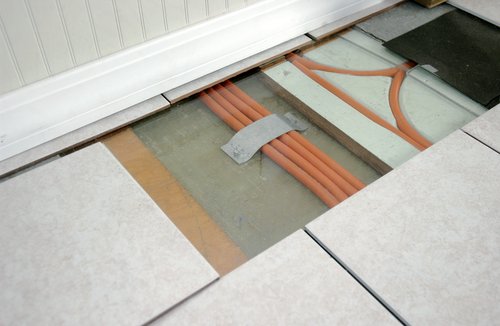Technology Spotlight: Radiant Heating Systems
Thursday, September 15, 2011By Alexis Powers
Editor’s Note: This post is one of a series of technology spotlights that introduce common technologies used in U.S. Department of Energy Solar Decathlon team houses.
Homes generally rely on forced air systems, such as baseboard heat, for warmth in the winter. But for more energy-efficient and environmentally friendly heating, several houses built for the U.S. Department of Energy Solar Decathlon use radiant floor heating instead.
Radiant heating systems deliver warm air throughout a house in a silent, uniform, and energy-efficient way. Radiant floor heating is the most common application of this technology, although these systems are sometimes used to heat wall panels or even the ceiling.

In its Solar Decathlon 2002 house, the University of Delaware used a radiant floor heating system that consisted of fluid-filled tubing laid beneath grooved plywood and aluminum sheeting. (Credit: Chris Gunn/U.S. Department of Energy Solar Decathlon)
The most popular and cost-effective radiant heating device is a hydronic, or water-based, system, which circulates hot water through a series of tubes laid beneath the floor. When connected to a solar hot water system, hydronic radiant flooring can greatly reduce home energy bills.
Materials and installation costs for an 800-ft2 home start at approximately $1,500.
For More Information
To learn more about radiant heating products used in past Solar Decathlon houses, search the floor construction section of the Solar Decathlon 2009 product directory.
Alexis Powers is a member of the Solar Decathlon communications team.
Tags: Solar Decathlon, Solar Decathlon 2011, Technology Spotlights
